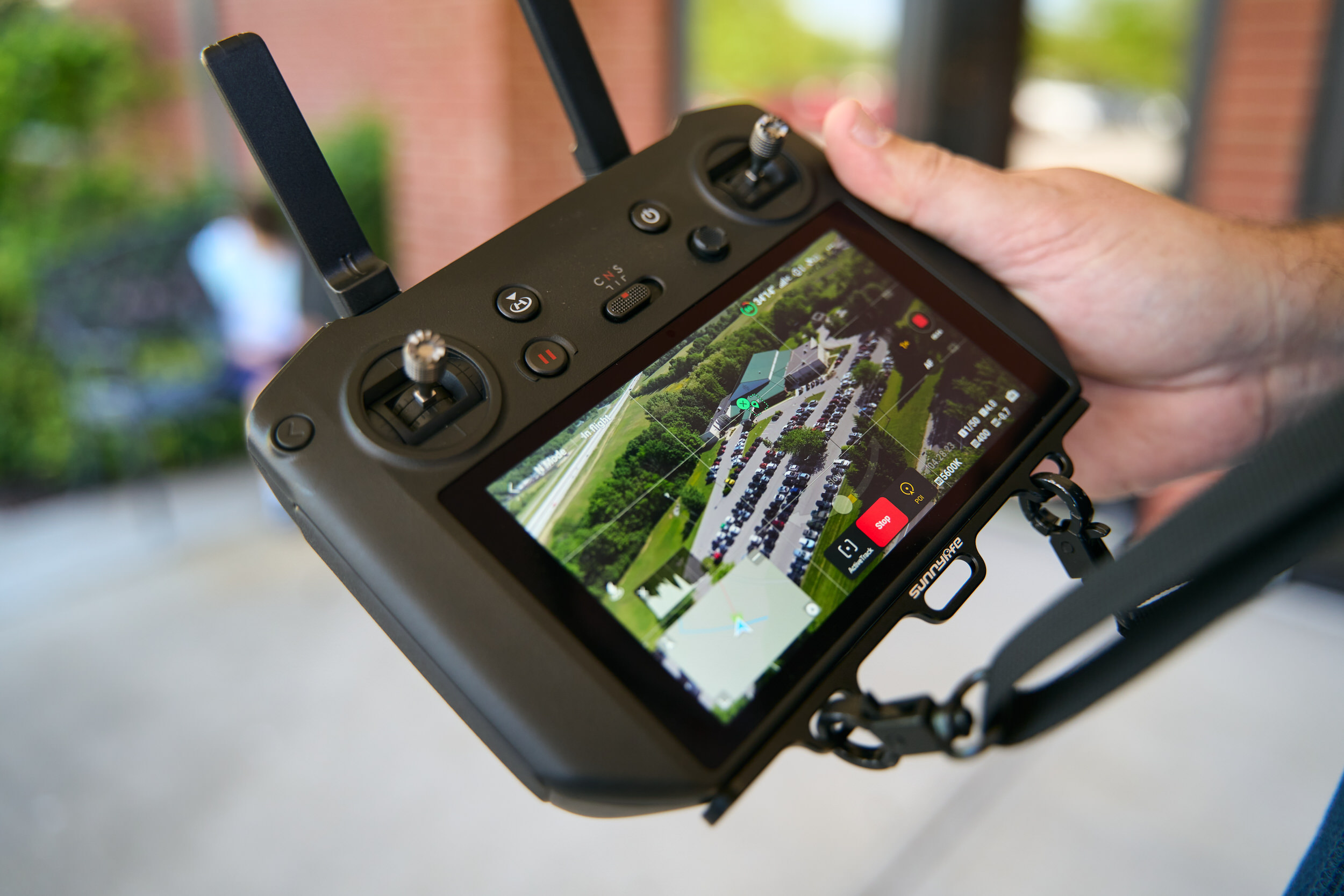What to expect
Have you ever started on a video project and realized you needed a script? In this post, we’ll share some important tips and ideas for writing video scripts to ensure the best results. We’ll cover:
- When you should and shouldn’t write a video script
- The process for writing your script
- How to refine your script to make it more effective and natural
- How to deliver your video script
Before you get started
Before you press record yourself or hire a video production company to come in, you need to have a plan in place. Planning is required regardless — but during that process, how do you determine when a video calls for a script? Video scripts are usually used when you want someone looking directly into the camera and addressing the viewer — think of this like watching the news. This is in contrast to a typical interview-style video shoot where the person is responding to questions presented by someone just to the side of the camera — think “60 Minutes” interviews for this style. They both have a time and place. Scripted content is usually about conveying straight information, while an interview is more about sharing a perspective. With that in mind, here are a few instances when writing a script is in your best interest:
- When you have a hard time-mark you need to hit (think 30 or 60 second commercial spots)
- When you have something very specific you need to say in a very specific way (choice of words and details is crucial and can’t be left to chance)
- When the video is only going to be comprised of B-roll (you’d hear a voice-over with your images)
- Book-ending a collection of interviews
- The opening/closing of a video with slides and/or b-roll to create a personal touch (think training, facility tour, or explaining a program or process)
You get the idea. A script can be used for a variety of different kinds of videos; however, as mentioned above, there are several times we would suggest forgetting the script. Here are a few:
- When you are telling a story — stories are all about emotional connections and when you have someone read instead of tell you are creating a barrier to that emotional connection.
- You need a more casual delivery — scripts typically have a more formal feel, though they can be written in a way that feels more casual, which we will talk about in this next section.
Writing your script
Writing a good a video script can be a little deceptive in its complexity — not because you don’t know what to say, but because it can be difficult to figure out how to say what you need to say. I think one of the most important things to keep in mind when writing a script is time.
You aren’t writing a thesis
There is plenty of discussion about the best length for a marketing video — some say short, some say long. No matter what camp you land in, here are a couple tips to get your script started.
- Start with the end in mind – know what you want the viewer to think, feel, and know.
- Make an outline – since you know how you want to finish the video, work backward from there by creating an outline of the main points that will get you to the end.
- Start writing – think of this like writing a paper in school: introduction, supporting arguments, and closing. Get something you feel pretty good about “on paper.” If you have a specific length of video you need to create, check out this website (Convert Words To Time) to get a rough idea of how many words you can write and still hit your mark.
Now that you have a script in front of you, it’s time for the most important step (at least in our opinion) — revising your script. You might be saying at this point, “Wait, I already did all this when I wrote the script the first time!” And you’re right…sort of.
You aren’t a robot
The way that we write and the way that we speak are two very different ways of communication. With written communication, grammar, punctuation, and structure all come into play. Verbal communication, on the other hand, is much more about flow. We all typically speak with contractions, use slang, and use incomplete sentences. Pure and simple, the spoken word is different than the written word. So, how do we translate the script that we have written into something that will sound good? It’s actually easier than you might think. Here’s what you need to do:
- Read it aloud. Think about how it flows — if it even flows at all. If it doesn’t, think about how you would share the content with a friend at the coffeeshop, and make those changes.
- Record it on your phone. Listen to yourself. Think: does it sound natural? Does it sound like me? Did I hit the time-mark I need to hit? This is an important time to point out one common mistake you can make when reading your own script out loud. In the privacy of your own home or office, chances are you will read the script much faster than if you were presenting to someone else. So, take your time.
- Read it out loud to your colleagues. The purpose of this is to get final feedback from others on how natural the script sounds. Multiple sets of ears can help you refine the script into something that flows very naturally and easily but still retains the information you first wanted to share.
By following these steps, you can make sure the video script sounds natural, not robotic.
Delivery
Now that you have a great script in place, let’s talk a little bit about delivering that script on camera. You essentially have two options now — memorize the script or use a teleprompter. In our opinion, those are really the only viable options, and we suggest the teleprompter almost 100% of the time.
Memorizing
Have you ever watched the outtakes from a tv show or movie? I’m going to go ahead and assume “yes” for the sake of this article. One of the things you will often see during these outtakes is an actor saying the word “line” when they have forgotten their line and are asking for assistance. Forgetting lines is easy even if you are a professional who is getting paid a lot of money. That’s not to say someone can’t memorize something by heart and deliver it every time like they do on Broadway, but there is an immense amount of time that goes into that. So unless you are going to be reciting this script everyday for several months, we would always recommend using a teleprompter.
Teleprompter
 Teleprompters are nothing new — newscasters have been using them for years. They are comprised of a two-way mirror (it’s technically not a two-way mirror, but that’s the easiest way to describe it) that sits slanted in front of the lens of the camera. Right below the mirror is a monitor that is connected to a computer that displays the words and scrolls them as the presenter reads them. Just like a newscaster, the presenter looks like they are looking right into the lens of the camera, but the reality is, they are seeing the script scrolling right in front of them. The benefits of this are obvious. The words are right in front of you, right where you need to be looking. By having the words in front of you and removing the memorization and recall barrier, you are able to focus on delivery. Do I have the right energy? What am I doing with my hands (cue Ricky Bobby)? How is my pacing? What are my facial expressions like? By eliminating the memorization barrier, you have given yourself the opportunity to focus on other aspects that have a huge impact on how your message is received.
Teleprompters are nothing new — newscasters have been using them for years. They are comprised of a two-way mirror (it’s technically not a two-way mirror, but that’s the easiest way to describe it) that sits slanted in front of the lens of the camera. Right below the mirror is a monitor that is connected to a computer that displays the words and scrolls them as the presenter reads them. Just like a newscaster, the presenter looks like they are looking right into the lens of the camera, but the reality is, they are seeing the script scrolling right in front of them. The benefits of this are obvious. The words are right in front of you, right where you need to be looking. By having the words in front of you and removing the memorization and recall barrier, you are able to focus on delivery. Do I have the right energy? What am I doing with my hands (cue Ricky Bobby)? How is my pacing? What are my facial expressions like? By eliminating the memorization barrier, you have given yourself the opportunity to focus on other aspects that have a huge impact on how your message is received.
Getting started with a teleprompter
Now that we have talked about the benefits of the teleprompter, you might be thinking, “That sounds amazing. The only problem is, I don’t have one.” The beautiful thing about smart phones and tablets is that there are now a number of manufactures that have created teleprompter systems that work with them. We have one that simply attaches to the lens of the camera and uses your iPhone as the monitor that scrolls the text. It includes a remote control to control the speed of the script as well and comes in at around $100. If you are going to be close to the camera and you’re doing it all on your own, this is a great little setup. For our professional video productions, we use a system that is much more expensive. However, if you are just getting started, there are plenty of options.
What not to do
As I said, I believe you only have two options — memorize or use a teleprompter. Printing out your script and having someone hold it near the lens or taping it near the lens doesn’t work. Whenever someone does that, it is a dead giveaway, as their eyes are always darting back and forth from the script to the lens. This is not hyperbole — it’s always visible and always detracts from your message.
Closing
Video scripts are powerful tools. They allow you to take your time, focus in on the important details, and deliver with confidence. By following the steps above for both writing and delivering your script, you can ensure your message — whether it’s a non-profit or corporate video — will have the information and tone you want. Below, we’ve included some samples of videos using scripts if you’d like some inspiration. Happy scripting!




